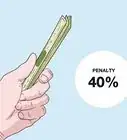This article was co-authored by Bryan Hamby. Bryan Hamby is the owner of Auto Broker Club, a trusted auto brokerage in Los Angeles, California. He founded Auto Broker Club in 2014 out of a passion for cars and a unique talent for customizing the car dealership process to be on the buyer’s side. With 1,400+ deals closed, and a 90% customer retention rate, Bryan’s focus is to simplify the car buying experience through transparency, fair pricing, and world class customer service.
There are 10 references cited in this article, which can be found at the bottom of the page.
This article has been viewed 995,212 times.
A Vehicle Identification Number (VIN) is a 17-digit unique code given to a vehicle upon its production. It tells you the manufacturer, place of production, and the car's options. It is also useful information when talking to body shops and dealerships about the specifics of your vehicle, or when you’re buying a used car and want to learn more about its history. A VIN number is a great tool in checking the options on a car. With a little work, you’ll be able to locate the VIN, use it to get information on the manufacturer’s website, and get a vehicle history report from third party companies.
Steps
Using VIN Decoding Websites
-
1Find a website to give you details about the car. There are a variety of websites that offer VIN lookup services. These websites will ask you to enter a car’s VIN, and then will supply you with information about the car’s options.
- Run an internet search for “free VIN lookup” or “free VIN decoder.”
- There are websites that provide free VIN lookup services. For example, try: https://www.northamericanmotoring.com/forums/vindecoder.php
- While some free VIN report services provide every detail of a car’s options, others do not.
- Some websites offer an advanced search for a fee.[1]
-
2Enter your VIN. After you’ve found a website where you can look up your VIN, enter it in full. This is the most important step, and you need to follow the website’s directions. If you don’t, your search might not work or it might return incorrect data.
- Follow the directions on the website and then press "search."
- Some websites may ask you to omit certain parts of the VIN number.[2]
Advertisement -
3Review the VIN detail report. After submitting the VIN number, you’ll get a report back. The report will detail the specifications of the car as it was produced by the manufacturer.
- The VIN report should include options, such as the transmission, the trim, and emissions specifications.
- The VIN report should include anything that was changed in the production process.
- VIN detail reports may not include options added after manufacturer, added at the dealership, or added by the consumer after the initial sale.
- Depending on the website, you may need to pay a fee for your VIN report.
- Make sure the title on the car is clear, meaning it doesn't have any history or current status as a salvaged vehicle, and there isn't any type of lien on the car.[3]
Decoding the VIN
-
1Visit the manufacturer’s website. Once you’ve got the VIN number, log on to the internet and visit the manufacturer’s website. The carmaker’s website will contain resources that will help you decode the VIN and understand what each number means.
- Find the VIN decoder or search section of the website. Almost all manufacturers have a VIN decoder or similar tool on their website.
- Search through the tabs or search bar for "VIN decoder" or "VIN search."
- Click on the page or .pdf file that gives you information about decoding the VIN. For example, visit estore.honda.com/honda/parts/use-your-vehicle-vin.asp.[4]
-
2Look at the world manufacturer identifier. The world manufacturer identifiers are the first 3 letters or numbers at the beginning of the VIN. This will give you information about the type of vehicle and where it was produced.
- The first number/letter tells the region the car was manufactured in, for example, “North America.”
- The second number tells the country.
- The third number tells the type of vehicle, for example “light truck.”
- Many different vehicles will share their first 3 numbers/letters.[5]
-
3Identify the second sequence of numbers. The second sequence, numbers and letters 4 through 8, tell you more information about manufacturer options. By decoding these numbers, you’ll learn about the features the vehicle was manufactured with. These numbers will tell you info about the:
- Engine
- Model
- Body style.[6]
-
4Skip the ninth digit. This is the digit used to verify that it is not a fraudulent VIN. It cannot be used to find information about the car. This digit is called a “check digit.”
- If you suspect the vehicle has a fake VIN number, contact the manufacturer.
- To decode this number, you may have to bring your car into a dealership.[7]
-
5View the tenth digit. The tenth digit will tell you the model year of the vehicle. This is important to knowing the options on the vehicle, as different model years are equipped with different option group packages.
- This does not indicate what year the car was built. For example, if the car was a 2010 Chevrolet Equinox, it might have been constructed in late 2009
- This information should also be available in the vehicle’s manual or on other paperwork associated with the car.[8]
-
6Find the last 7 digits. Along with the second sequence of numbers, these last digits are perhaps the most important for finding the options of the vehicle. They will give you all the car specific information you’re looking for.
- You’ll only be able to decode this information on the car manufacturer’s website.
- These numbers should give you information like that listed on the original sticker of the car.
- The numbers will also tell you in what specific plant the vehicle was built as well as production-specific information.[9]
-
7Read about common options. While manufacturers use different codes to represent different options, the information encoded in the last 7 digits of your VIN number will provide specifics about a number of options. These numbers, which are actually your car’s serial number, will give you info about common options like:
Purchasing a Vehicle History Report
-
1Submit your VIN to a third-party website. There are several companies that compile and sell vehicle history reports. A vehicle history report is a comprehensive history that includes data on a vehicle’s manufacture, sales, and sometimes repair information. Try websites like:
- Carfax
- Autocheck[11]
-
2Pay a fee. After submitting your VIN, the third-party website may prompt you to pay a fee for a complete vehicle history report. While you may not want to pay, it is standard for companies to charge for this service.
- Feel free to shop around. Different websites or companies may offer different prices. In addition, some companies may run promos on vehicle history reports at different times.
- Fees normally range from between $20 to $40 to receive a full vehicle history report.
- Some websites may provide cheaper rates per report if you want several vehicle history reports. For example, you may be able to get 5 reports for $59.99.[12]
-
3Examine the report. Once you get your report back, you’ll need to take a good look at it so you can get a good idea of the car’s history, options, and other information. When reading the report:
- Verify the report matches the VIN you submitted.
- Read about the car's production and the vehicle's repair and registration history in the report.
- Look to see if the vehicle has been repaired or if the report shows any evidence of aftermarket upgrades.[13]
Locating the VIN
-
1Find the VIN on the car, if you have access to it. Most vehicles have the VIN etched or in the form of a sticker on at least 2 parts of the car. Look for the VIN on:
-
2Look for the VIN on paperwork associated with the car. While you should be able to find the VIN on the actual car, it might be easier to find it on the car’s paperwork. This will come in handy if you don’t physically have the car, but have some paperwork associated with it. Look on the:
- Title
- Registration
- Repair records[16]
-
3Ask the seller for the VIN. If you don’t own the car yet and can’t access it, you can ask the seller of the car for the VIN. The seller will be able to find the VIN just like you could – through paperwork or by looking on the body of the car.
- Make sure the seller provides you with the entire 17-digit VIN number before you commit to buying the vehicle.
- The seller should happily give you the number so that you can do an independent vehicle history search. If they don’t, they may be hiding something.
- Keep in mind that between 1954-1981 there was no standard format for VINs. The best source for information on a vehicle would be to contact the original manufacturer.[17]
Expert Q&A
-
QuestionWhy is my antique car's VIN too short?
 Bryan HambyBryan Hamby is the owner of Auto Broker Club, a trusted auto brokerage in Los Angeles, California. He founded Auto Broker Club in 2014 out of a passion for cars and a unique talent for customizing the car dealership process to be on the buyer’s side. With 1,400+ deals closed, and a 90% customer retention rate, Bryan’s focus is to simplify the car buying experience through transparency, fair pricing, and world class customer service.
Bryan HambyBryan Hamby is the owner of Auto Broker Club, a trusted auto brokerage in Los Angeles, California. He founded Auto Broker Club in 2014 out of a passion for cars and a unique talent for customizing the car dealership process to be on the buyer’s side. With 1,400+ deals closed, and a 90% customer retention rate, Bryan’s focus is to simplify the car buying experience through transparency, fair pricing, and world class customer service.
Professional Auto Broker Between 1954 and 1981, there was no standard format for VINs. Try contacting the original manufacturer for information on the vehicle.
Between 1954 and 1981, there was no standard format for VINs. Try contacting the original manufacturer for information on the vehicle. -
QuestionHow do I find out the options on a used 2013 RAV4 Limited?
 Community AnswerCall a Toyota dealer with the VIN, and they will get you a Build Out Sheet showing all the features and options.
Community AnswerCall a Toyota dealer with the VIN, and they will get you a Build Out Sheet showing all the features and options. -
QuestionHow do I decode a VIN for a 2015 Nissan Altima SV? 如何为2015款尼桑 Altima SV 解码车辆识别码?
 AutobestMingCommunity AnswerYou can go to a site that offers the service like Nissanpartsdeal.com and click on the "Select Vehicle by VIN" tab.
AutobestMingCommunity AnswerYou can go to a site that offers the service like Nissanpartsdeal.com and click on the "Select Vehicle by VIN" tab.
Things You'll Need
- Vehicle Identification Number (VIN)
- Manufacturer's website
- $20 to $40 fee for a vehicle history report
References
- ↑ https://www.northamericanmotoring.com/forums/vindecoder.php
- ↑ https://www.northamericanmotoring.com/forums/vindecoder.php
- ↑ Bryan Hamby. Professional Auto Broker. Expert Interview. 1 March 2020.
- ↑ https://estore.honda.com/honda/parts/use-your-vehicle-vin.asp
- ↑ http://researchmaniacs.com/VIN/VIN-Decoder.html
- ↑ http://researchmaniacs.com/VIN/VIN-Decoder.html
- ↑ http://researchmaniacs.com/VIN/VIN-Decoder.html
- ↑ http://researchmaniacs.com/VIN/VIN-Decoder.html
- ↑ http://researchmaniacs.com/VIN/VIN-Decoder.html
- ↑ http://vin.dataonesoftware.com/vin_basics_blog/bid/146754/why-you-shouldn-t-settle-for-a-vin-decoder-that-just-decodes-the-vin
- ↑ https://www.carfax.com/
- ↑ https://www.edmunds.com/how-to/how-to-quickly-decode-your-vin.html
- ↑ http://www.clark.com/free-vin-report
- ↑ https://estore.honda.com/honda/parts/use-your-vehicle-vin.asp
- ↑ Bryan Hamby. Professional Auto Broker. Expert Interview. 1 March 2020.
- ↑ http://www.dmv.org/vehicle-history/find-vin.php
- ↑ Bryan Hamby. Professional Auto Broker. Expert Interview. 1 March 2020.
- ↑ https://www.nhtsa.gov/recalls
About This Article
To use a VIN number to check a car’s options, go the manufacturer’s website and find the VIN decoder section. Then, use the last 7 digits of your VIN to learn about specific options like trim color, seat covering material, and power seats and windows. Alternatively, enter in your VIN number on a VIN decoding site to find out about options such as the transmission, trim, and emission specifications. However, be aware that these sites may charge a fee for an advanced search or a detailed VIN report. For more advice, including how to obtain a vehicle’s sales and repair information, keep reading.
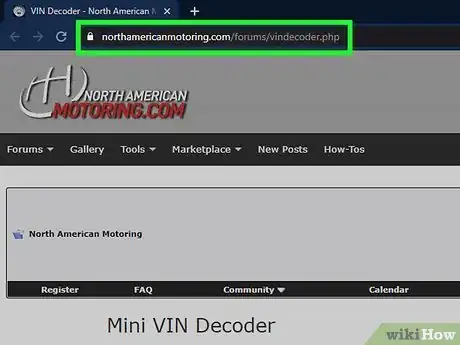
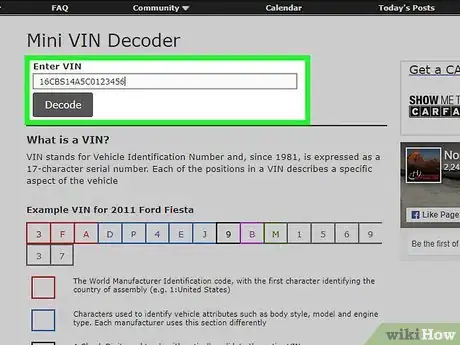
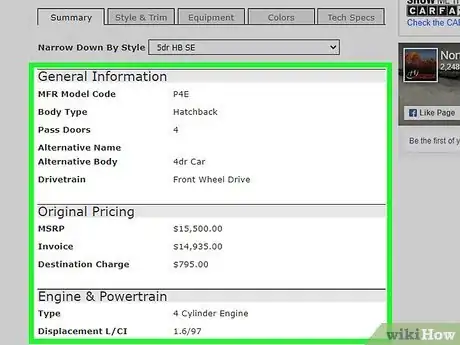

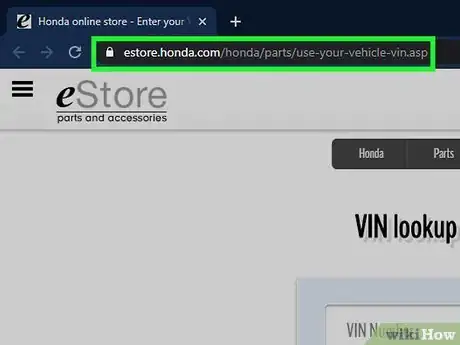
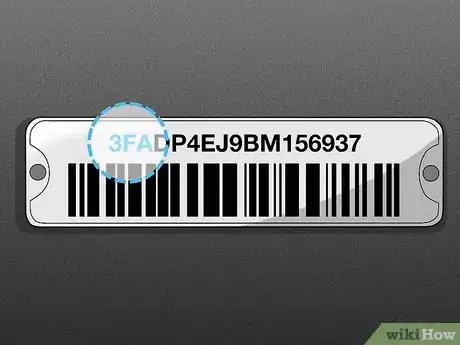
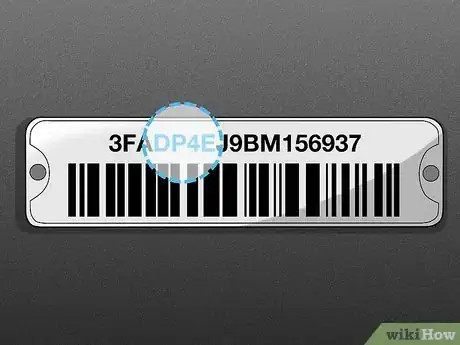
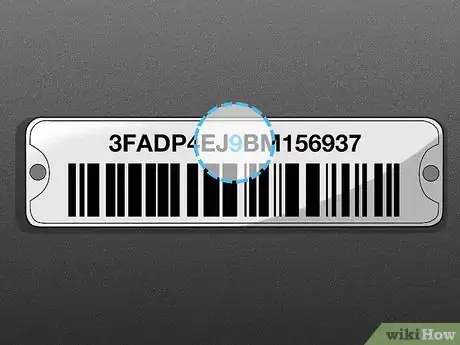
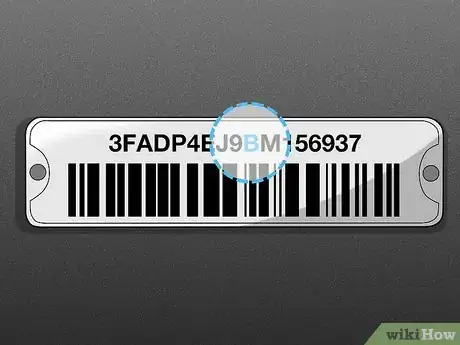
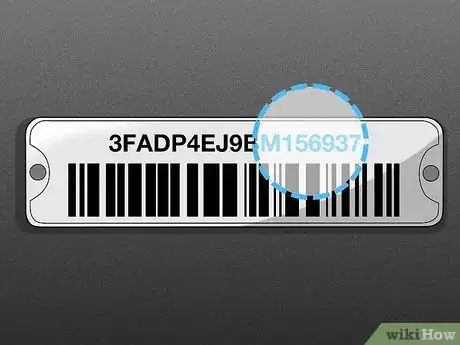
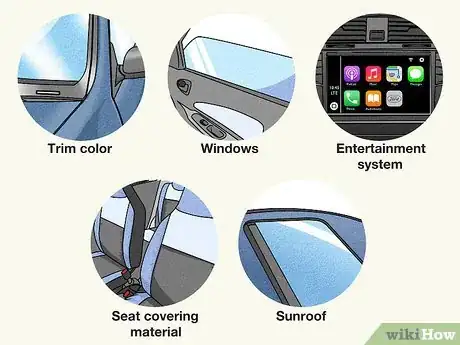
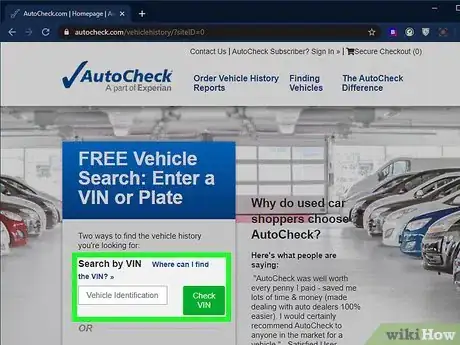
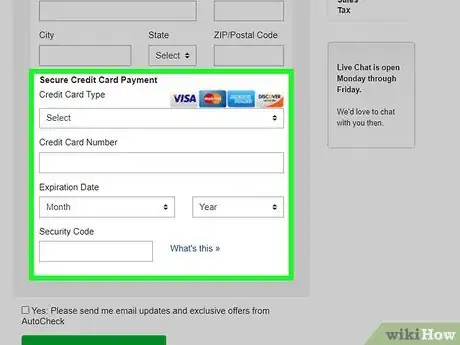

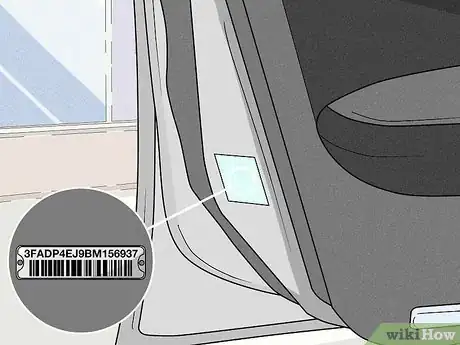
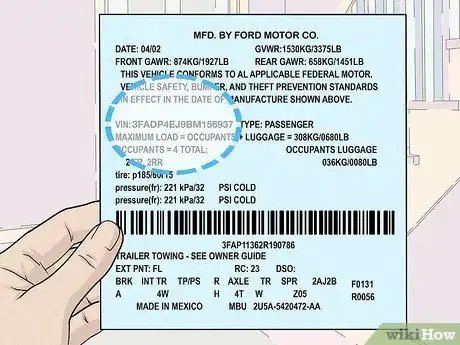
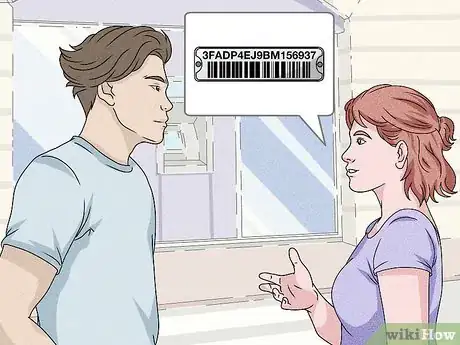

-Step-17.webp)
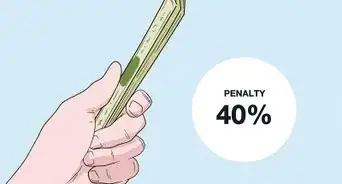
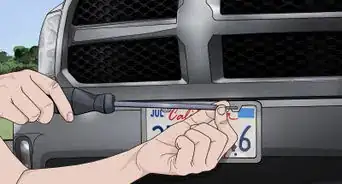


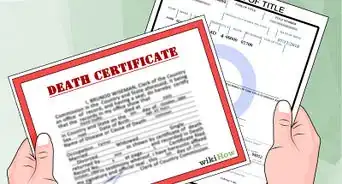

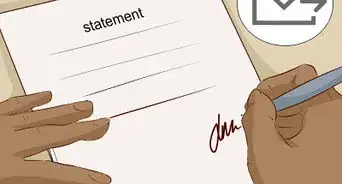

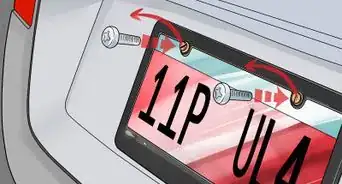
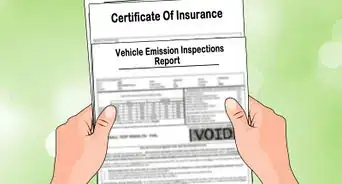

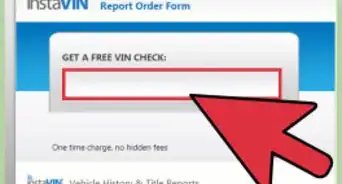










-Step-17.webp)
